Buying stylish clothes at an affordable price is appealing to most consumers, but it can have negative impacts on our environment. Known as fast fashion, this industry offers low prices on clothing, but it comes at a hidden cost. Thanks to a rise in the human population and the increasing popularity of fashion-related social media content, people often think they need more clothes than they really do. In fact, humans are consuming a whopping 400% more clothing today than they were 20 years ago. Behind the automotive and technology industries, clothing is the third biggest manufacturing industry in the world. However, fashion manufacturers are responsible for five percent of the world’s greenhouse gas emissions, producing 1.2 billion tons of CO2 per year. If you want to learn how to avoid fast fashion by buying more sustainable clothing, read on to learn more.
What is fast fashion?
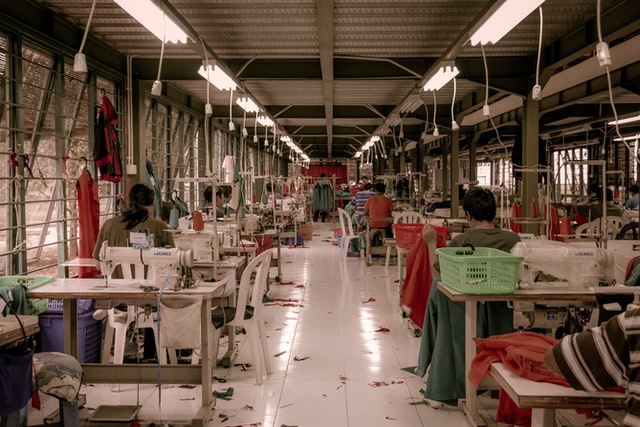
The term fast fashion refers to a highly profitable industry that mass produces clothing, shoes, and accessories based on the latest trends. This clothing is available at a low cost, but most products aren’t exactly made of the highest quality. Since trends come and go, most people who buy fast fashion items wear them short-term, then dispose of them. In many ways, it has dangerous repercussions on the environment.
The effects of Fast Fashion on the environment: Because this clothing is made at large manufacturing plants, it uses a massive amount of energy and natural resources. Some chemicals used in dyes and manufacturing can contaminate the soil and nearby waterways. As a whole, the industry produces a tenth of the world’s total carbon emissions. Producing items like jeans requires several thousand gallons of water, making it a wasteful industry as well. And, since this clothing is “disposable,” most fast fashion items end up in a landfill which contributes to pollution. On average, each American throws away approximately 80 pounds of clothing every year. Thankfully, there are some things you can do to reduce your consumption and carbon footprint.
What is ethical and sustainable fashion?
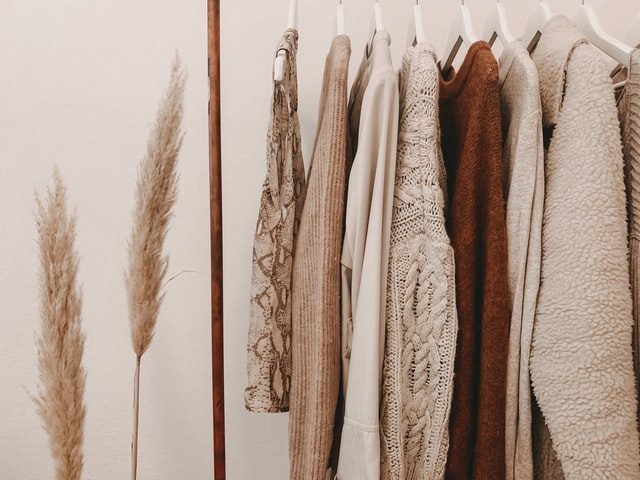
Ethical and sustainable fashion uses materials that are made and marketed in a responsible way that takes its environmental and socioeconomic impacts into account. Ideally, the process of sustainable fashion is performed across a garment’s entire life cycle from the manufacturing process all the way to its disposal. In addition to having a smaller carbon footprint, this type of fashion pays attention to the ethical aspects too. People who work for these companies are paid a living wage and work in safe environments. Here are some examples of sustainable and ethical fashion.
Slow Fashion: Think of slow fashion as the exact opposite of fast fashion. Learn more about it in this article. Brands have an understanding and approach to fashion that takes the manufacturing process and resources it requires into consideration when making clothing. This industry holds a high value on the fair treatment of people, animals, and the environment. Many brands also focus on making fewer pieces and higher-quality items, so they last longer and don’t end up in a landfill. Even luxury brands are going sustainable.
Circular Fashion: In the circular fashion industry, materials and production are well thought out, and the company looks deeper at how each item can be used in a more sustainable way from manufacturing to disposal. It also takes things a step further by designing out waste and pollution by using recyclable or biodegradable materials. Some companies also make repurposed items out of old products, ensuring that these items remain in the life cycle of clothing rather than going to a landfill.
The purpose of circular fashion is to not just minimize resource-use and waste, but also to consume less. After all, we don’t need so many clothes, do we? A limited number of high-quality, tastefully chosen items that were sustainably made (aka sustainable capsule wardrobe) will do for the vast majority of us. It’s actually how our grandparents lived!
How can you make a change?
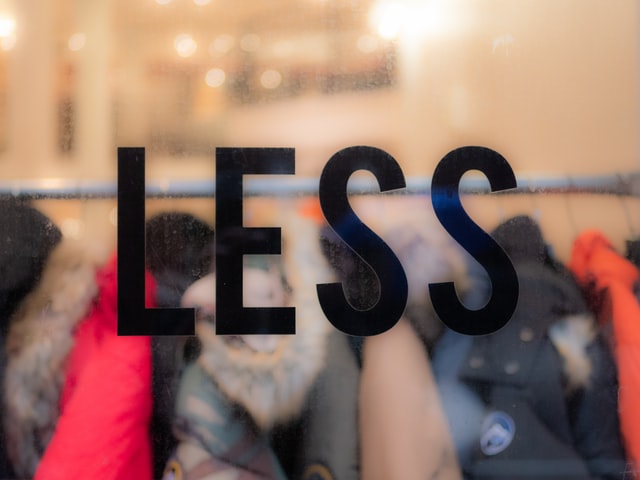
There are some things you can do to develop a more sustainable wardrobe, including:
- Find out where your clothes come from: Determine the source of your clothing including where it’s made, what type of materials are used, and if possible, the company’s manufacturing process. Knowing the source of your clothing is the first step toward making better purchasing choices.
- Analyze the brands you buy: Take a closer look at your wardrobe and your favorite brands. Find out where their clothes are made. Are they exploiting workers? Are they using wasteful or recyclable materials? How much does their clothing contaminate the environment? When you learn more about the clothes you love, you can make smarter choices for the future by choosing eco-friendly brands. When planning a present for a loved one, please look for eco-conscious alternatives.
- Make smart choices: Reduce your consumption of clothing by wearing what you already have as much as possible before buying something new. Recycle your old clothing if possible so it doesn’t end up in a landfill. Repair ripped or torn clothing by sewing it back together before you throw it out. Resell clothing you no longer want or need so that someone else can enjoy wearing it. Donate clothing to local charities and to people in need.
Buying sustainable clothing and reducing your fashion carbon footprint
Here are a few ways you can purchase sustainable clothing while reducing your carbon footprint:
- Know what to look for in a brand: Find out what types of manufacturing processes are best, what brands offer items made of sustainable materials, and what they’re doing to help the environment, including options for vegan luxury fashion. Some brands offer programs where you can return used clothes for a store credit or ensure that they go back into the production cycle rather than in the trash. When you find these, look at the brands they recommend the most to see if they align with your values. A company with good fashion industry PR will be transparent about its processes.
- Avoid greenwashing: The term “greenwashing” refers to companies that claim to be eco-friendly but they’re actually not following the proper processes. Brands should be open and honest, offering their sustainability reports to consumers. If a brand uses eco-friendly packaging but their clothing isn’t sustainable, that’s also greenwashing. Even luxury brands can be guilty. For example, several years ago, the designer Burberry burned unused clothing, bags, and cosmetics rather than selling them at a discount or giving it away. Use websites like Environmental Working Group, Rank a Brand, and the Fashion Transparency Index to help you find a legitimate brand that sells sustainable clothing.
- Choose eco-friendly fashion materials: Look for products made with eco-friendly fabrics and other materials. Things like linen, organic cotton, and dyes made of squid ink are just some examples. Hemp is another excellent choice that is gaining popularity in the fashion world. You can also apply this when going to the beach.
Eco clothing buying guide and tips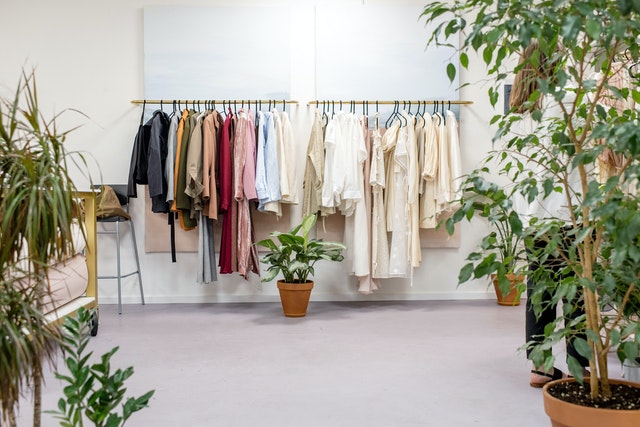
Keep these clothes buying and eco-fashion tips in mind when shopping for a new wardrobe.
- Capsule Wardrobe: A capsule wardrobe includes versatile, limited items of clothing that you can mix and match to create different looks. This is a great way to reduce your consumption while getting the most use out of the clothes you already have in your closet.
- Buy durable clothing; Invest in more durable, high-quality clothing that will last. It may cost more upfront, but you’ll get a lot more use and enjoyment out of the items you buy.
- Purchase second-hand clothing: Look for new clothes at thrift stores, vintage clothing stores, and garage sales. It’s a great way to find unique pieces at a low price without buying something new. You can also have a clothing swap party, more ideas here!
- Discover sustainable clothing brands: Seek out eco-friendly, sustainable clothing brands. Some examples include Girlfriend Collective, Goshopia, Patagonia, The Bali Market, and Cotopaxi, just to name a few. There are even ethical, organic bra and underwear options available. Over time, you’ll learn how to spot authentic sustainable brands versus those that are greenwashing.
- Make your own clothes: Learn how to knit and sew so you can make your own clothes. You can even take older pieces and turn them into something unique and new.
- Care for your clothes: Take proper care of the clothing you already have. Learn how to wash and clean different fabrics the right way and how to find some quality, eco-friendly detergents. Try to wash your clothes less often and use the cold cycle, and air dry them on a clothesline or rack whenever possible. Not only will this extend the life of your clothes, but it will reduce your carbon footprint, too.
- Only buy clothes that spark joy: As Marie Kondo says, you should only have items that “spark joy.” Try to avoid impulse purchases and instead, invest your money into pieces that you absolutely love and know you’ll wear for a long time.
Is Eco-Fashion only for the rich?
You may think that buying eco-fashion is just for the rich, but there are ways to find amazing eco-friendly clothes at an affordable price.
How expensive are eco clothes? Many sustainable brands charge a higher price because they produce less clothing or have smaller operations. It also costs more in general to produce eco-friendly products. While some eco-fashion brands are high-end, others offer their products to consumers at prices that are closely in line with less sustainable competitors. You can find some eco clothes secondhand to get them at a lower price too. Shop sale events and look for discount codes to get eco-friendly clothes for less.
Why are they worth it? While this clothing may cost more upfront, it tends to last longer which means you’re getting more for your money and the cost is reduced compared to the number of times you wear it. It also may cost more because the company is paying a living wage. If you’re concerned about the ethics of fast fashion, then paying more money is worth it to ensure that workers are getting paid a reasonable salary, supporting sustainable business is really important. The cost of sustainable materials also tends to be higher, since these materials are produced in smaller batches and require more work to make. Overall, the price is a small one to pay if you’re concerned about the harmful effects of fast fashion.
Looking at the things we buy and realizing that we’re causing more damage than we realize is the first step toward making a positive change. Fast Fashion is also polluting our oceans. When you learn about the harmful effects of fast fashion and know what to look for, you can start to make smarter purchasing decisions. Consider starting a capsule wardrobe, looking for secondhand clothing, and only buying products from truly sustainable brands, so you can make a difference.
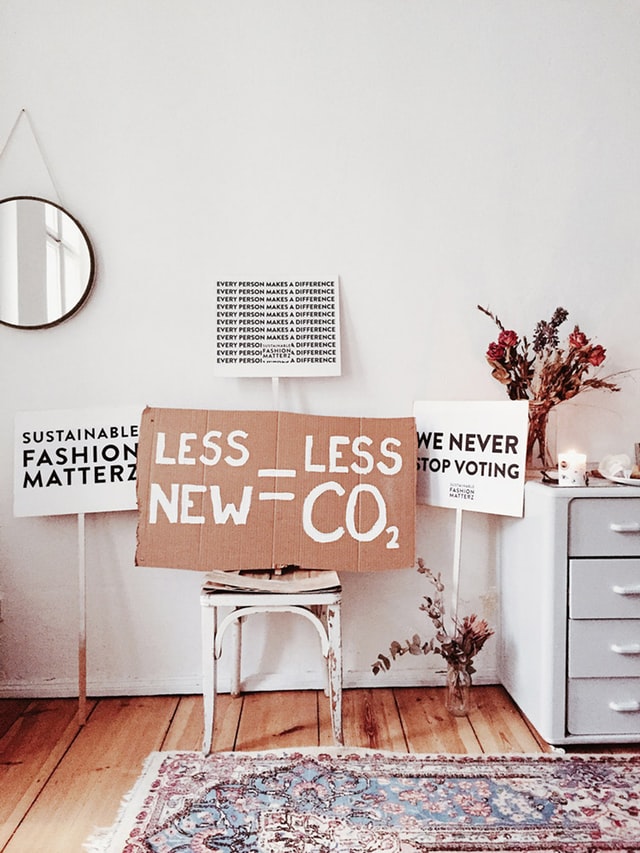
“Cheap prices make us believe they bring about savings for consumers. This may appear true in the short term, with a narrow focus and looking just at the money in our wallets, but all of us, as global citizens, will ultimately end up paying the external cost, the true cost for the unsustainable consumption and production of cheap clothing.” – Fashion Revolution




